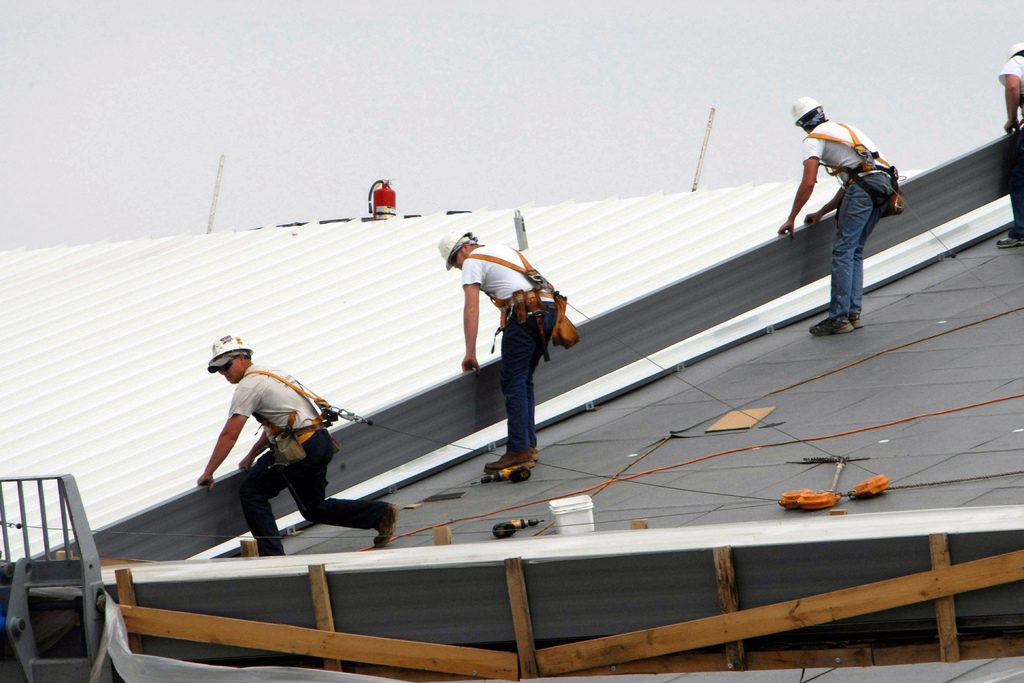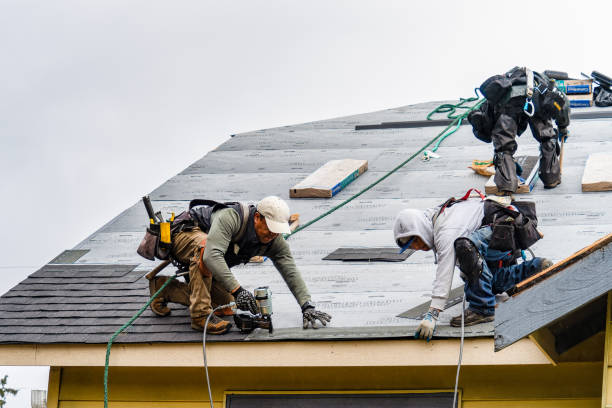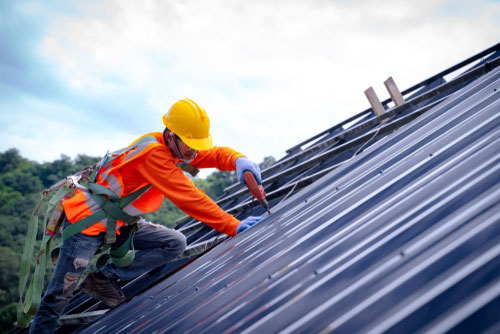Exactly How to Examine Different Roof Options for Your Building Needs
Reviewing roof options for your structure needs an extensive method that considers numerous elements such as the planned use of the framework, regional environment conditions, and product attributes - Roofing Contractor. It is essential to consider the benefits and disadvantages of different roof covering types, from asphalt roof shingles to metal and clay ceramic tiles, while also factoring in preliminary costs and long-lasting upkeep.
Evaluating Your Structure's Requirements
To properly assess roof covering choices, begin by extensively analyzing your building's demands. Begin by thinking about the building's meant usage, as various structures may demand differing roofing requirements. For circumstances, household roofings often prioritize aesthetic appeals and insulation, while business structures might concentrate on toughness and load-bearing ability.
Next, evaluate the neighborhood climate conditions that will certainly affect roofing efficiency. Aspects such as temperature fluctuations, rainfall levels, and wind patterns can affect material choice and design. A roof that stands out in a temperate environment may not perform too in areas vulnerable to heavy snowfall or severe warm.
Additionally, assess the structural integrity of your structure. Ensure that the existing structure can support the selected roofing products, particularly if thinking about much heavier choices. It is likewise essential to examine any local building regulations or policies that might dictate certain demands for roofing systems.

Contrasting Roof Covering Materials
Once a detailed analysis of your structure's requirements has been finished, the following step includes comparing different roof materials. Each material offers distinct benefits and negative aspects, making it vital to align your option with your certain demands and scenarios.
Asphalt roof shingles are widely recognized for their price and simplicity of installment, making them a prominent alternative for property buildings. On the other hand, steel roofing, known for its longevity and durability, can endure harsh weather yet may come with a greater preliminary financial investment.
Clay and concrete ceramic tiles offer superb thermal insulation and visual appeal, specifically for Mediterranean-style design, yet they call for a more durable structural assistance due to their weight. Timber shakes deal a natural look and great insulation residential properties however might demand a lot more maintenance and are prone to fire hazards.
Examining Cost and Spending Plan
Assessing your roof covering options requires a mindful assessment of price and budget factors to consider. The total budget plan for a roof covering project makes up numerous elements, consisting of product costs, labor costs, upkeep, and potential long-term savings. It is vital to establish a clear spending plan before checking out certain roofing products, as this will certainly lead the decision-making process and help you prevent overspending.
Begin by obtaining quotes from several service providers to understand labor expenses in your area. Make certain that these estimates include all required services, such as removal of the old roofing, setup, and any kind of added attributes, useful source like insulation or air flow renovations - Sylvania Roofing Contractor. Next, evaluate the cost of different roof materials, taking into consideration both preliminary setup costs and expected lifespan

Comprehending Power Performance
Power efficiency plays a critical role in the selection of roof products and systems, dramatically influencing both power consumption and overall comfort within a building. A well-chosen roofing system can enhance thermal performance, decreasing the requirement for heating and cooling systems, which in turn lowers energy costs and decreases ecological influence.
When evaluating roof covering choices, consider products that show rather than soak up warm. Additionally, correct insulation and ventilation are important to maximize the power efficiency of the whole roofing system.
An additional important element is the roof's longevity and upkeep demands. Sturdy materials that need less frequent substitute contribute to lasting power cost savings. The energy performance of a roof system can additionally be evaluated via its conformity with established sustainability rankings such as ENERGY STAR or LEED.
Thinking About Visual Charm
A roofing's visual see allure significantly affects the overall look of a structure, complementing its building design and enhancing aesthetic allure. Perrysburg Roofer. When evaluating roof alternatives, it is vital to think about just how the selected product, shade, and design will balance with the existing framework and area. A properly designed roof can raise even the easiest of structures, changing them right into aesthetic focal factors
Different roofing materials provide different visual top qualities. For instance, typical tiles might stimulate a classic charm, while metal roofing can pass on a contemporary, smooth look. Additionally, the color of the roof covering material plays a crucial role; lighter tones can make a structure show up even more large, while darker tones may create a cozier ambiance.
Moreover, building aspects, such as dormers and eaves, can improve the roofing system's visual influence. It is suggested to seek advice from expert designers or architects to make certain the chosen roof option straightens with the total style intent. Ultimately, a roof needs to not only offer useful advantages but additionally add positively to the structure's aesthetic, mirroring the proprietor's taste and the personality of the surrounding environment.
Verdict
